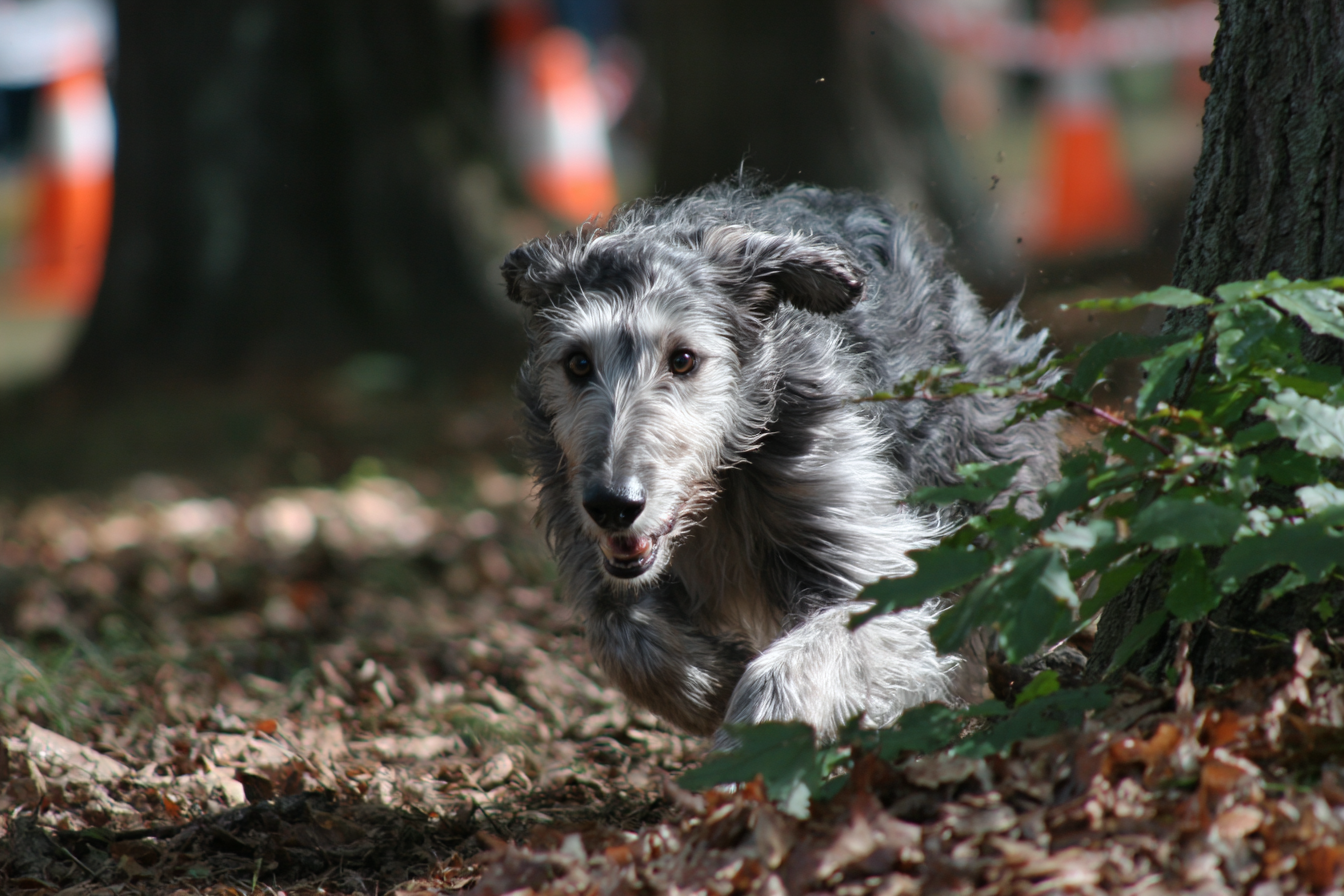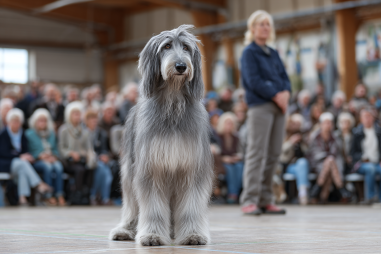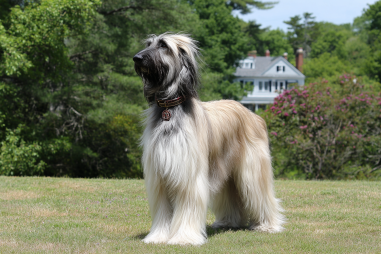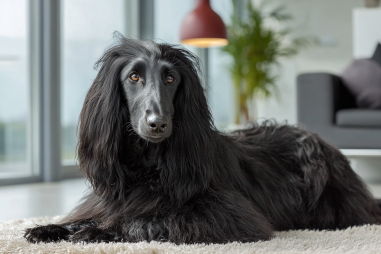Afghan Hounds are graceful, elegant dogs known for their distinctive appearance and independent spirit. To keep these regal companions happy and healthy, it’s essential to focus on both their physical exercise and mental stimulation. Their unique personality and energy levels mean that not just any activity will do. Providing a well-rounded routine can help prevent boredom, destructive behaviors, and contribute to a fulfilling life for your Afghan Hound. Let’s explore how to combine exercise and mental challenges to keep your Afghan Hound thriving.
The Importance of Mental and Physical Exercise
Like all dogs, Afghan Hounds need a balance of physical activity and mental engagement to maintain optimal health and happiness. Physical exercise supports cardiovascular health, helps control weight, and provides an outlet for their natural energy. However, Afghan Hounds also have a sharp intellect and a curious nature, which means mental stimulation is just as important as their daily run or walk.
Without sufficient mental challenges, these dogs can become bored and frustrated, which often leads to unwanted behaviors such as excessive barking, digging, or chewing. Consistent mental exercises help enhance their focus, reinforce training, and deepen bonding with their owners. Together, physical and mental activities create a holistic approach to well-being for your Afghan Hound.
Recommended Physical Activities
Afghan Hounds are known for their speed, endurance, and graceful movement. Their slim, athletic build is perfect for activities that allow them to stretch their legs and sprint. Here are some physical activities particularly suited to Afghan Hounds:
- Daily Walks: Regular walks, ideally twice a day, help maintain their fitness while providing opportunities to explore new environments.
- Running and Sprinting: Afghan Hounds love to run free in a safe, enclosed space like a dog park or a securely fenced yard where they can unleash their speed.
- Hiking: Exploring trails offers not only exercise but interesting sights and smells, enriching their experience.
- Agility Training: This sport combines physical challenge and mental focus, encouraging precise movements and quick thinking.
- Swimming: Many Afghan Hounds enjoy water, and swimming is a great low-impact exercise for joint health.
Remember to tailor the intensity and duration of these activities based on your dog’s age, health, and fitness level.
Interactive Games for Mental Stimulation
Engaging your Afghan Hound’s mind can be just as fun as physical exercise. Interactive games can foster problem-solving skills and provide the mental challenge they crave. Some favorite games include:
- Hide and Seek: Hide treats or toys around the house or yard and encourage your dog to find them using their nose.
- Puzzle Toys: Toys that require your dog to figure out how to unlock a treat or manipulate objects keep them mentally active.
- Fetch with a Twist: Add variation by throwing toys to different areas or incorporating commands between each fetch.
- Name Recognition: Teach your dog the names of their toys and then ask them to select specific ones.
- Scent Work: Afghan Hounds have a good sense of smell, so scent games can be highly rewarding.
These games stimulate their brain while reinforcing positive interaction with you.
Training Exercises That Challenge the Mind
Structured training doesn’t just teach good manners—it also exercises the mind. Afghan Hounds are intelligent but can be independent, so training needs to be engaging and consistent. Consider incorporating:
- Obedience Commands: Start with basic commands (sit, stay, come) and gradually move to more complex behaviors.
- Trick Training: Teach fun tricks like rolling over, playing dead, or weaving through your legs to keep sessions entertaining.
- Clicker Training: This positive reinforcement method can enhance focus and speed up learning.
- Impulse Control Exercises: Help your Afghan Hound practice patience and good manners, such as waiting calmly before eating or going through doorways.
- Recall Challenges: Build reliable recall skills with distractions to keep their attention sharp.
Short, frequent training sessions work best to hold your dog’s interest and avoid frustration.
Tailoring Activities to Fitness Level and Age
Each Afghan Hound is unique, so their exercise and mental stimulation routines should be adapted to their personal needs. Puppies, adults, and senior dogs require different intensities and types of activity:
- Puppies: Focus on short bursts of play and gentle mental games, avoiding rigorous exercise to protect developing joints.
- Adult Dogs: Most Afghan Hounds fall in this category, where you can gradually increase exercise duration and introduce more challenging mental tasks.
- Seniors: Older dogs benefit from low-impact activities like slow walks and gentle swimming, alongside mentally stimulating but less strenuous games.
Monitoring your dog’s response during and after activity is crucial. Signs of fatigue, limping, or reluctance to participate should be taken seriously, with rest or veterinary advice as needed.
Avoiding Exercise Monotony
Afghan Hounds can become bored if their activity routine is repetitive. To keep things interesting for your dog—and more enjoyable for you—vary your sessions. Try:
- Changing walking routes or locations to provide new sights and smells.
- Rotating toys and games to maintain novelty.
- Introducing new commands and tricks regularly.
- Inviting other dogs for socialization and group play sessions.
- Scheduling rest days to allow for recovery and prevent burnout.
By mixing things up, you feed both their physical curiosity and mental agility.
Signs Your Afghan Hound Needs More Stimulation
Even well-cared-for dogs can slip into boredom or frustration if their needs aren’t met. Watch for these indicators that it might be time to step up your Afghan Hound’s exercise and mental challenges:
- Destructive Behaviors: Excessive chewing, digging, or scratching at doors and furniture.
- Restlessness: Pacing, whining, or hyperactivity without an obvious reason.
- Excessive Barking: Vocalizing more than usual, often out of boredom or anxiety.
- Withdrawal: Loss of interest in play or interaction.
- Weight Gain: Reduced activity can lead to weight issues and related health problems.
If you notice any of these signs, it’s a good idea to reassess your dog’s routine and introduce new forms of engagement to improve their wellbeing.
Creating a Balanced Routine for Your Afghan Hound’s Wellbeing
Combining physical exercise with mental stimulation offers the best recipe for a happy, healthy Afghan Hound. By understanding their unique needs and preferences, you can develop a routine that challenges their body and mind. Consistency and variety are key—regular walks and runs complemented by games, training, and environmental enrichment help prevent boredom and behavioral issues. Whether it’s a sprint in the yard, a scent game indoors, or learning a new trick, these activities contribute to a joyful and enriching life for your beloved Afghan Hound.







